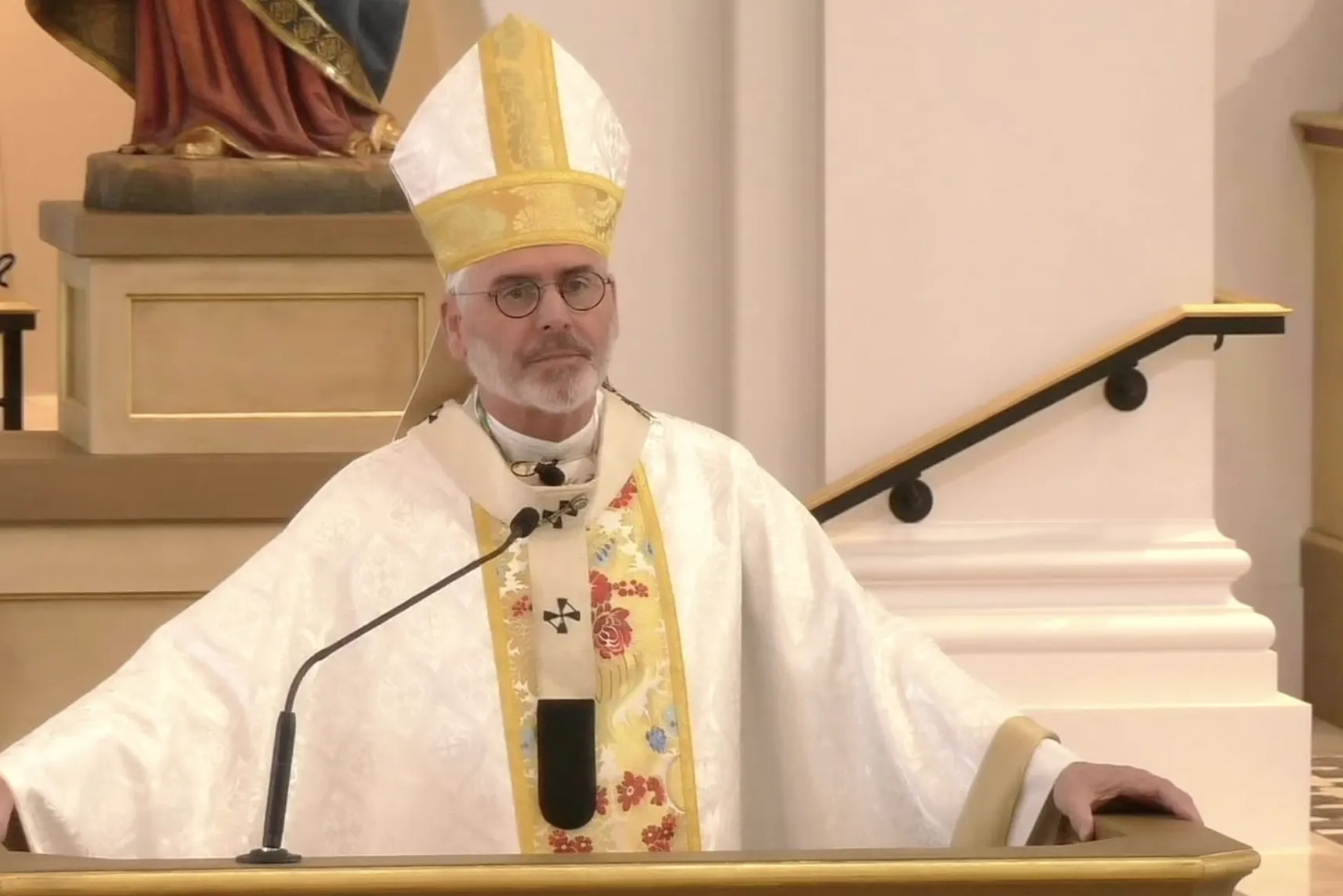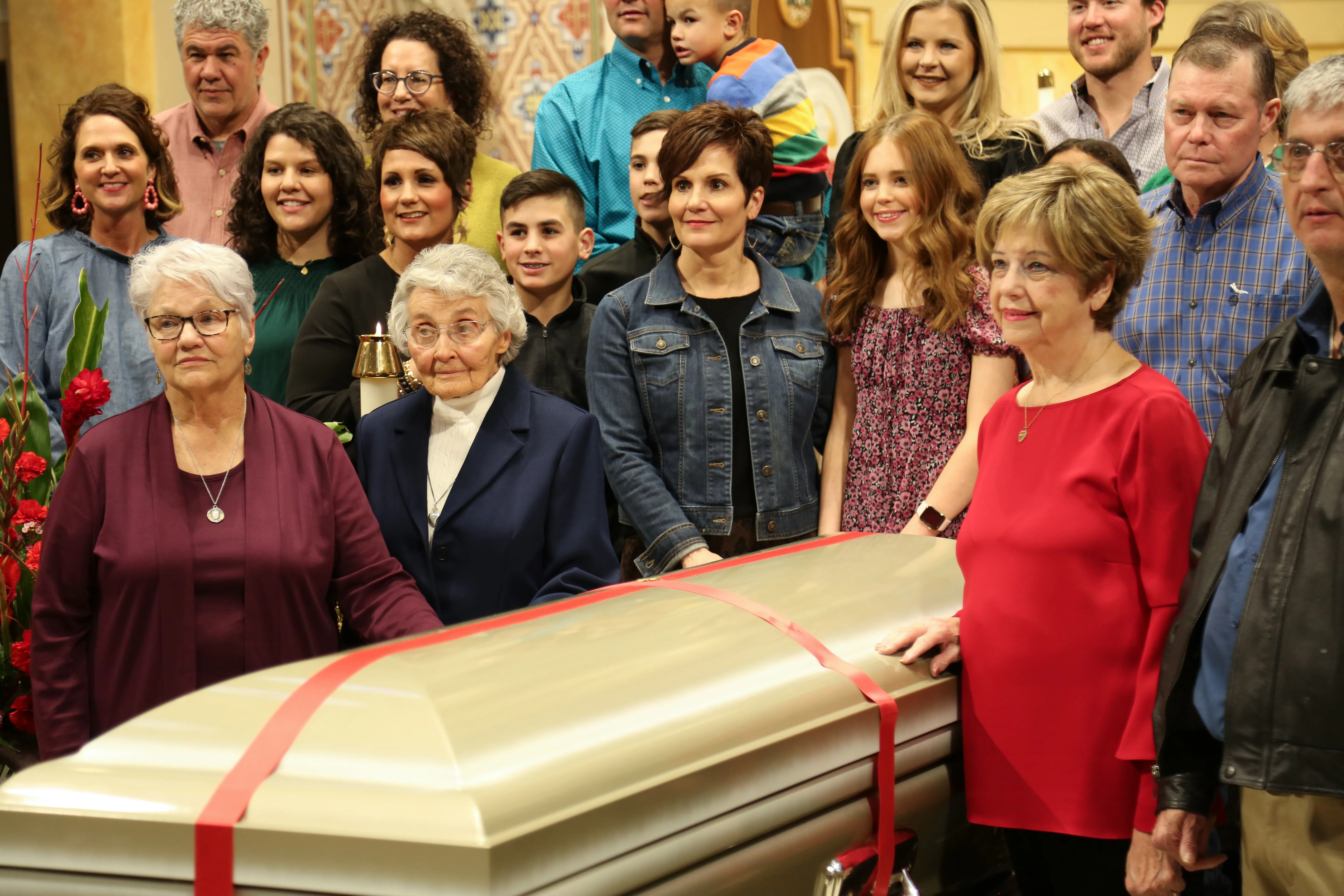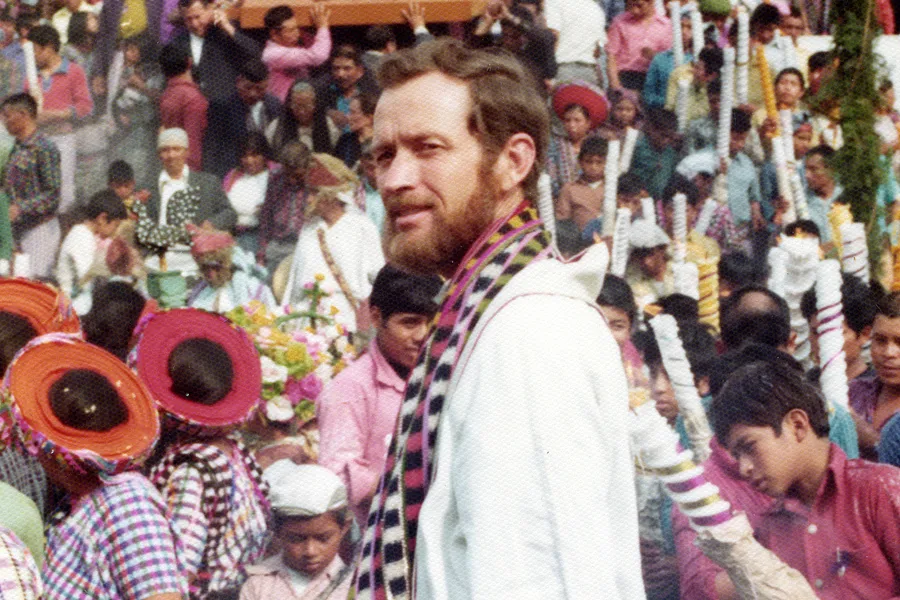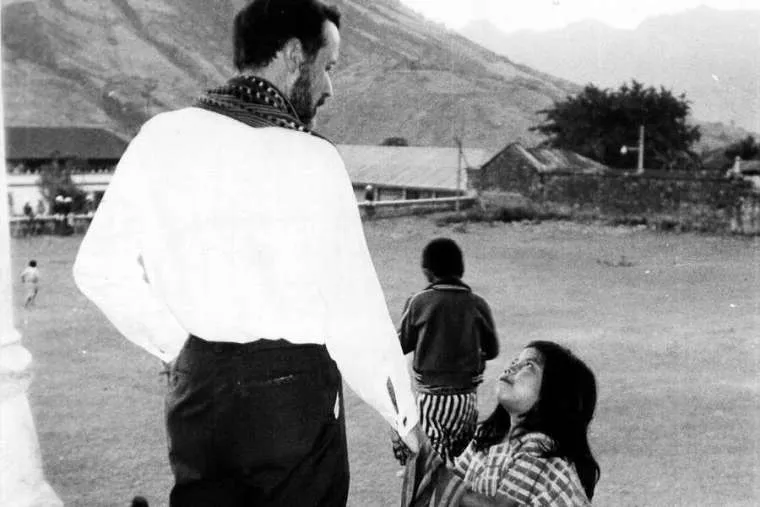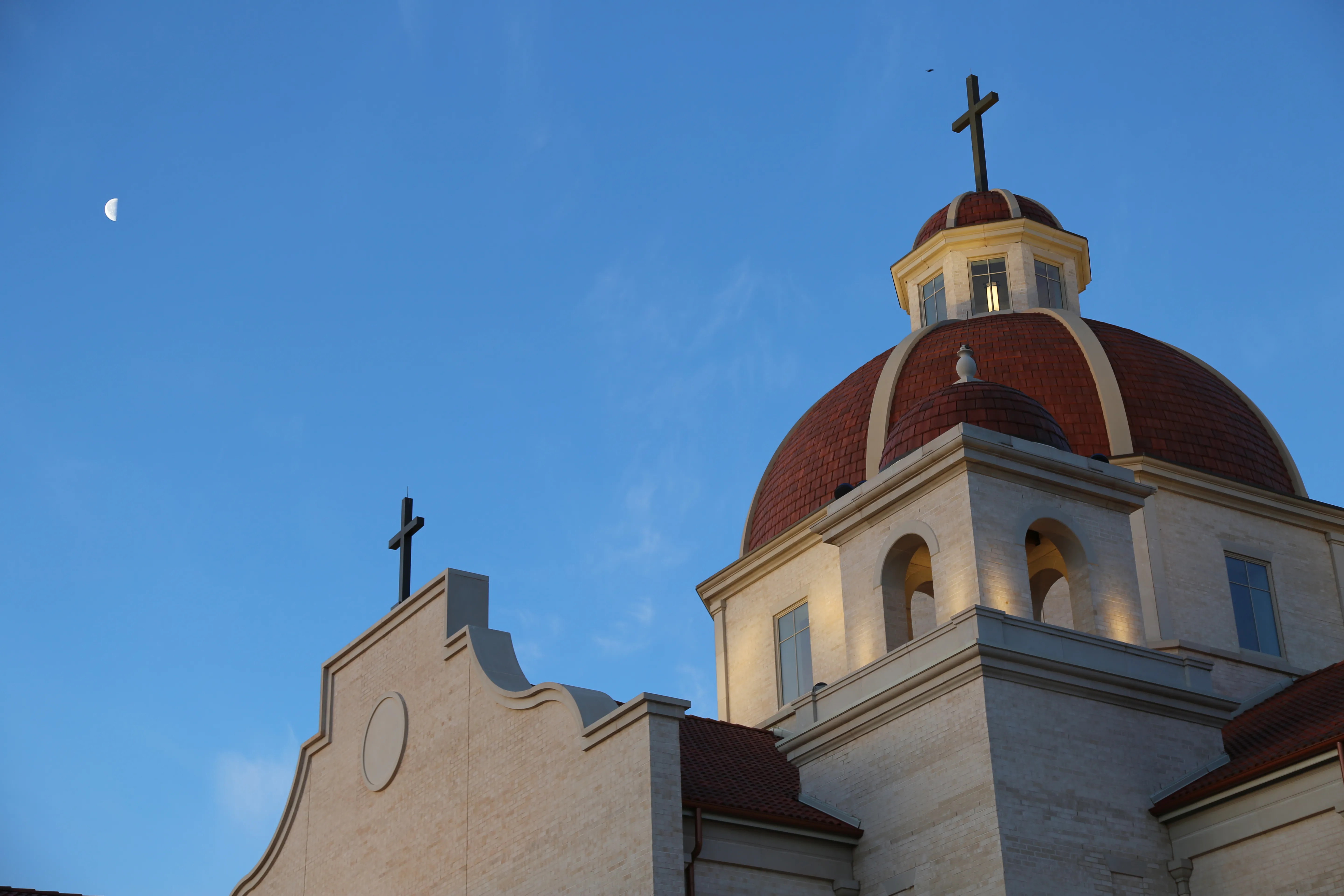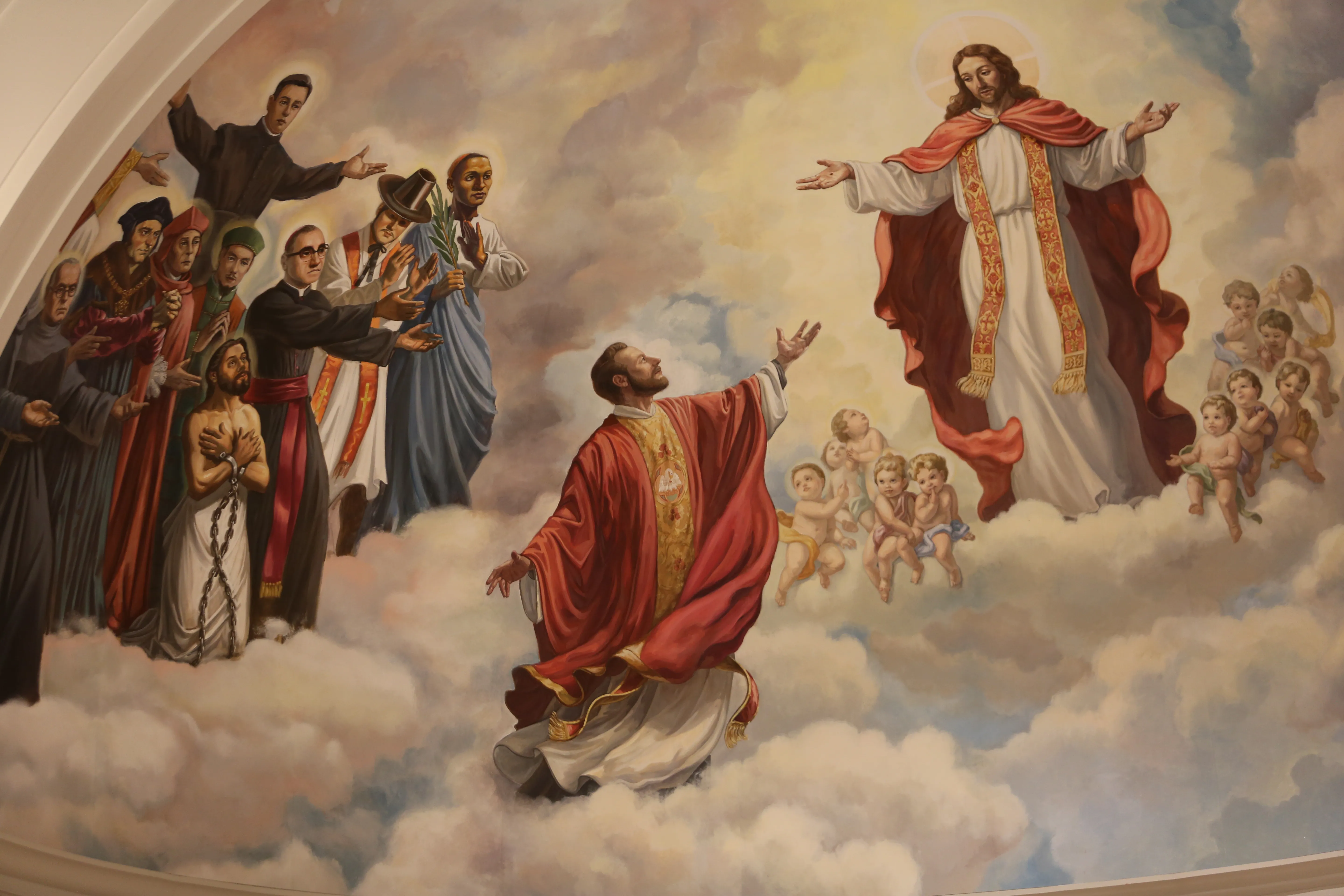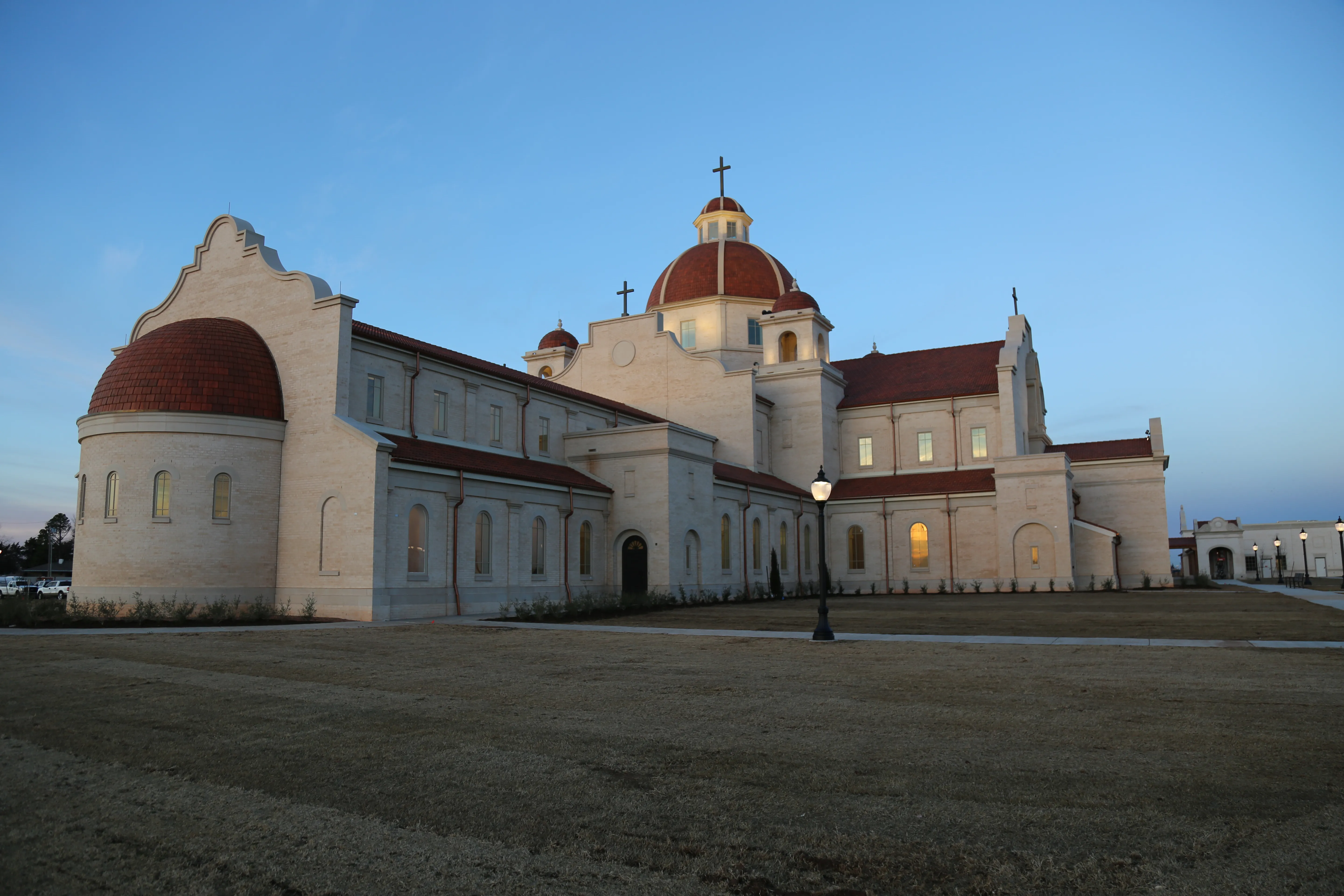‘He Was a Good Shepherd’: Blessed Stanley Rother Shrine Dedicated in Oklahoma City
Archbishop Paul Coakley noted that the dedication of the new shrine — named for the Catholic priest who served the poor as a missionary in Guatemala and was martyred there — serves as a reminder to Christians of the dignity they have as baptized people.

Stanley Rother, born a simple Oklahoma farm boy, became a Catholic priest and volunteered to serve the poor as a missionary in Guatemala in 1968. Thirteen years later, a group of armed men shot him to death in his rectory.
Four decades on, with thousands in attendance and amid a resounding, angelic choir, the archbishop of Oklahoma City dedicated and opened a multimillion-dollar, 2,000-seat shrine built in Father Rother’s honor.
Father Rother, who was reinterred in a chapel at the shrine over the weekend, is on the path to sainthood (he was beatified in 2017).
“Yes, we honor Stanley Rother here. But none of this, ultimately, is about Blessed Stanley,” Archbishop Paul Coakley of Oklahoma City said in his homily to the faithful at the Feb. 17 Mass, portions of which were celebrated in Spanish, at the Blessed Stanley Rother Shrine.
“It’s not about the beautiful art and architecture that speaks so eloquently of God’s goodness and mercy, and beauty. We gather here to honor the God who created all of this and the God who is glorified in his saints. We honor Blessed Stanley because we are giving glory to God. The life of each and every saint in the history of the Church manifests something of the perfection of Christ, reveals God’s beauty, his truth and his goodness.”
Father Rother, a native of rural Oklahoma, is the first person born in the United States to be officially declared a martyr by the Catholic Church and the first priest born in the United States to be beatified, or declared “Blessed.”
In attendance at the Feb. 17 Mass were numerous members of the Rother family, including Father Rother’s sister, Sister Marita Rother of the Congregation of the Adorers of the Blood of Christ in Wichita, Kansas. Also present were dozens of bishops, including Archbishop Christoph Pierre, the apostolic nuncio to the United States and representative of Pope Francis; Archbishop Emeritus Eusebius Beltran of Oklahoma City; and Jesuit Archbishop Gonzalo de Villa y Vásquez of Santiago de Guatemala, who served as Father Rother’s archbishop in Guatemala.
Archbishop Coakley thanked the packed congregation in attendance and noted the absence of Mark Ruffin, an Oklahoma City businessman and Catholic who discovered the property — a large plot of land — where the shrine was later built. Ruffin died during the COVID-19 pandemic, Archbishop Coakley said, his voice breaking.
Archbishop Coakley described Father Rother as a “very ordinary man … not born with a halo,” who nevertheless was a “good shepherd” who showed remarkable fidelity to the pastoral care of his people.
“We need such priests, such good shepherds, to make manifest the presence of Jesus in our midst,” Archbishop Coakley said.
Archbishop Coakley noted that the dedication of the new shrine — which involves, among other things, the anointing of the walls with oil and the sprinkling of holy water — serves as a reminder to Christians of the dignity they have as baptized people.
“God desires that each and every one of us become a saint,” he said.
The archbishop encouraged everyone present to strive to increase devotion to Father Rother, “a very attractive and relatable figure,” especially for young men in Oklahoma considering the priesthood.
“At a time when the priesthood of Jesus Christ is so little understood, or so little valued — due in no small part, admittedly, to the sins of some of our brothers — we need heroic, faithful, generous witnesses to remind us of the dignity of our vocation,” Archbishop Coakley said.
‘Padre Apla’s’
Rother was born in 1935 in Okarche, Oklahoma, about 40 miles northwest of Oklahoma City. He attended Holy Trinity Catholic Church and School before joining the seminary, where he struggled academically. He persisted in his studies, despite the challenges, and eventually graduated from Mount St. Mary's Seminary in Maryland. He was ordained a priest of the then-Diocese of Oklahoma City and Tulsa in 1963.
While Rother was in seminary, St. John XXIII asked the Churches of North America to send assistance to and establish missions in Central America. Soon after, the Oklahoma Diocese established a mission in Santiago Atitlan, Guatemala, a poor rural community of mostly Indigenous people, a group called the Tz’utujil, descendants of the Mayans.
Father Rother accepted an invitation to join the mission team five years after his ordination and would spend the next 13 years of his life in Guatemala, serving the people of the parish during the country’s civil war (1960–1996). While there, despite his academic struggles in seminary, he managed to learn both Spanish and Tz’utujil and even translated the entire New Testament into the Tz’utujil language. The locals called him “Padre Apla’s,” which means “Father Francis” (Rother’s middle name) in Tz’utujil.
Throughout the country’s civil war, fought between government militants and rebel guerillas, many Catholics were killed amid the Church’s insistence on continuing to educate and assist the poor. Father Rother briefly returned to his home state of Oklahoma after his name appeared on a right-wing death list but soon returned, knowing full well the dangers of doing so.
A famous quote is attributed to him: “The shepherd cannot run at the first sign of danger.”
Just a few months later, in the early morning hours of July 28, 1981, three ski-masked men broke into the rectory of the mission where Father Rother was living. The men attempted to kidnap Father Rother at gunpoint, but he refused and resisted, struggling but refusing to call for help, so as not to endanger the others in the parish mission. Within 15 minutes, the men had shot the priest twice and fled. No one has ever been prosecuted for Father Rother’s murder. He was 46 years old.
The Oklahoma City Archdiocese opened Father Rother's cause for canonization in 2007, and nine years later, Pope Francis recognized Father Rother as a martyr. More than 20,000 people attended Father Rother’s beatification Mass in Oklahoma City on Sept. 23, 2017, whereby he received his present title of “Blessed.”
In 2019, Gov. Kevin Stitt proclaimed July 28 as “Blessed Stanley Rother Day” in Oklahoma.
‘Where He Is Now’
Located just off I-35 in south Oklahoma City, the architecture of the new shrine — which sits on a former golf course — is designed in a similar style to the church at Santiago Atitlan, where Father Rother served in Guatemala. Construction on the shrine began in November 2019. Its first rector, Father Don Wolf, is a cousin of Father Rother’s.
Father William Novak, vicar general for the archdiocese, told EWTN News that the shrine embodies “traditional Catholic architecture” in its Baroque interior, with the exterior evoking the spirit of the “Spanish colonial period.”
The interior contains numerous murals, including a large mural in the chapel depicting Father Rother being welcomed into heaven by the Risen Christ and surrounded by angelic babies — a depiction of the Holy Innocents.
“We wanted an image of where he is now … this heavenly image of him being received by the Risen Christ,” Father Novak said.
Last Sunday, Feb. 12, Father Rother’s body was moved from Resurrection Memorial Cemetery in Oklahoma City to the Cathedral of Our Lady of Perpetual Help for vespers and an all-night vigil, and then his earthly remains were transported to the chapel at the new shrine. There, his body was placed immediately inside the altar of the shrine chapel, where it will rest permanently.
Though Father Rother’s body is interred in Oklahoma City, the Blessed’s heart remains enshrined at the church in Santiago Atitlan.
‘Bienvenidos a Todos’
In addition to the main sanctuary and the chapel, the shrine complex also includes religious education and ministry classrooms and a museum and pilgrim center with artifacts and stories about Father Rother’s life. The complex also features a recreation of Tepeyac Hill, the famous spot near Mexico City where Our Lady of Guadalupe appeared to St. Juan Diego in 1531. On the hill are painted bronze statues of Our Lady of Guadalupe and St. Juan that were dedicated in December 2022.
The shrine will function as a parish for those who live in south Oklahoma City, which has a growing Hispanic population, Father Novak, the vicar general, told EWTN News. Up until the construction of the shrine, the largest church in the area sat about 450 people, and parishioners from another nearby parish had been worshipping in a gym for more than 15 years, with nine Masses every weekend. The magnificent new shrine, in contrast, seats 2,000 faithful, Father Novak said.
At the dedication Mass, Archbishop Coakley acknowledged the local parishioners — most of whom are Hispanic — who will, as of this weekend, make the shrine their new parish home.
“Bienvenidos a todos,” he said. “Welcome to all.”
Leif Arvidson, the shrine’s executive director, said the plan is to make the sacrament of reconciliation, as well as Mass, available every day of the week. Arvidson formerly oversaw the Shrine of Our Lady of Guadalupe in La Crosse, Wisconsin.
The Rother Shrine’s massive price tag of more than $50 million is being covered entirely by donations, the archdiocese said. In 2018, the archdiocese announced that its capital campaign, one of the goals of which was the construction of the shrine, had surpassed its original $65-million goal.
Arvidson said he believes the spiritual good of the project would have been worth it for the people of Oklahoma City and, indeed, the world, regardless of the cost.
Arvidson said, “If just one soul comes closer to Christ, if one soul is brought to Christ, I think it’s all worth it.”




